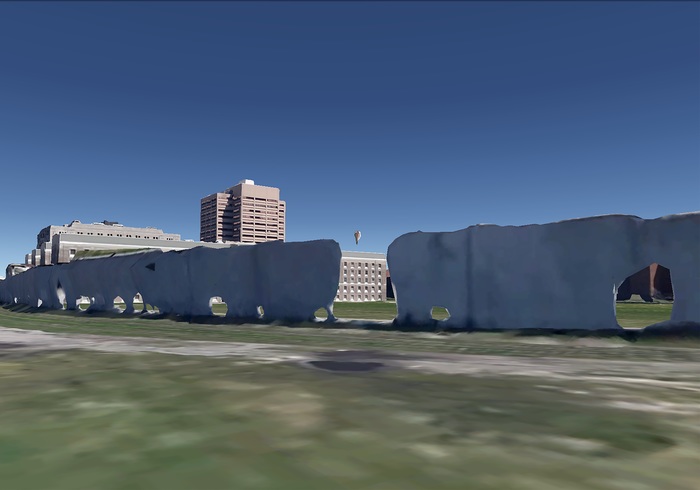Radioactive: An Interview with Maria Gaspar
An Interview for ArtSlant.
July 2016
In April 2019 ArtSlant ceased operations as a publication. Below is an excerpt of the introduction, and you can read the text-only version of the interview here…
I spoke with artist Maria Gaspar about her upcoming project RADIOACTIVE: Stories from Beyond the Wall on the Fourth of July. We talked about mass incarceration, a central subject of Gaspar’s work, on a day that asks people in the US to reflect on freedom. Days after Gaspar shared her thoughts on art and disruption, names like Alton Sterling and Philando Castile started to break open the stitches of old and new wounds and raise questions about freedom. I couldn’t ignore the timing.
In The Face of Human Rights, Carlos Fuentes writes, “perhaps those who lack freedom understand its value better than anyone. Those who take it for granted are those who risk losing it. And those who fight for it must be aware of the dangers implicit in the struggle to obtain it.”
History and the unrest of the present make painfully clear the ways in which police violence, the unjustifiable revoking of freedom, and mass incarceration are inextricably linked. If you need proof, you can look to the efforts in Chicago of organizations like Project NIA, Enlace Chicago, BYP100, Assata’s Daughters, Stop Chicago, We Charge Genocide, and others who continually work at their intersections. If it’s not calling out to you loud enough from the streets and digital space, you can find the evidence in exhibitions like our duty to fight at Gallery 400. Organized by Black Lives Matter Chicago and many of its allies, the show featured a collection of ephemera, documentation, artistic responses, and family collaborations around these concerns. It was all contextualized in a powerful statement and a list of harrowing statistics that outline many of the symptoms of each cause.
With these injustices and the attention they need—and even with many of the aforementioned organizations counting artists among their members—the question of what art can do comes up time and time again. But how does amplifying these issues happen now through artistic moves?
I landed on an essay in journalist and music critic Jeff Chang’s book Who We Be: The Colorization of America. In it he talks about how art, music, and writing have the ability to help us understand one another’s pain and joy. He uses the words of musician Vijay Iyer to consider how sound in particular can melt away the visual obstacles that keep some people from experiencing empathy for others, specifically those who look different or have experiences different than their own. Sound, he suggests, can dissolve the visual biases of color (or gender) that prevent people from connecting or achieving understanding on a basic human level.
Alongside these ideas and efforts is the work of Maria Gaspar and The 96 Acres Project. 96 Acres is a project she started in 2012 that uses a range of artistic and pedagogical approaches to talk about mass incarceration at Cook County Jail (the site of which is 96 acres) and how it impacts Black and Brown communities in Chicago. Along with artists, educators, and stakeholders within the neighborhoods immediately surrounding the jail, Gaspar is growing an archive of audio testimonials, artistic projects, and curricula that tell a different story about mass incarceration.
Recently, the Rauschenberg Foundation named Gaspar one of the 2016 Artist as Activist Fellows in Racial Justice + Mass Incarceration. Through this fellowship, she and the team will work with people inside the jail to produce a new series of projects that build on the work that has already happened outside of and on its walls.
With RADIOACTIVE: Stories from Beyond the Wall, a series of audio recordings and projections on the jail that Gaspar will produce during her fellowship, she is continuing to work with those most impacted by Cook County Jail. This includes thinking about what sound, the disembodied voice, and other art forms can uniquely communicate and what disruptions they can cause. Gaspar is thinking about these things at a time when recording is seen as a radical act, a necessary attempt to protect ourselves, an effort to maintain power over our stories, and a tool for exposing the blindspots of American freedom.
On Independence Day, I spoke to Gaspar about RADIOACTIVE, how it relates to her overall practice, and the work that has happened through 96 Acres.
Read the interview with Maria here...
All photos courtesy of the artist.



